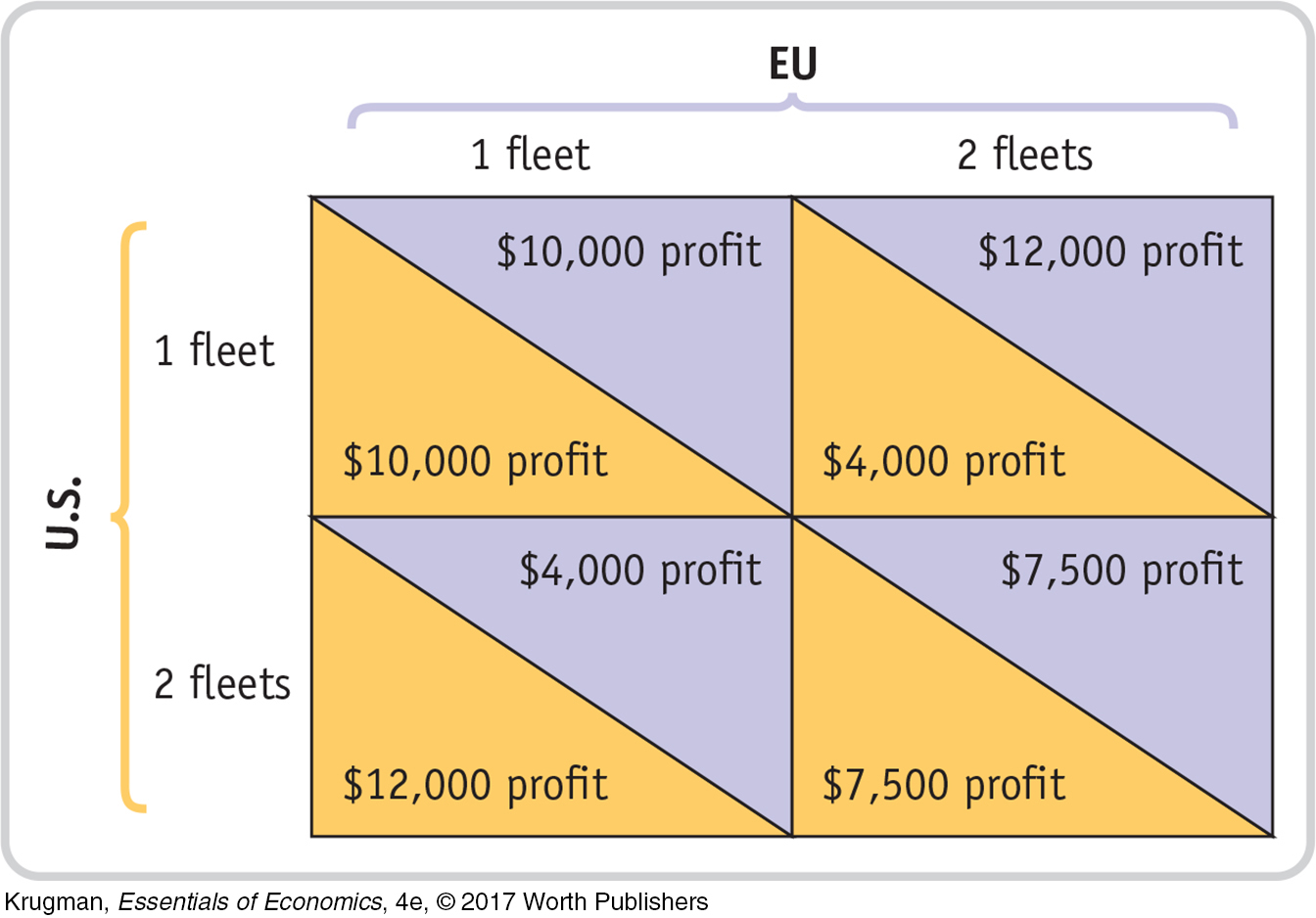Question 9.13
6. To preserve the North Atlantic fish stocks, it is decided that only two fishing fleets, one from the United States and the other from the European Union (EU), can fish in those waters. Suppose that this fisheries agreement breaks down, so that the fleets behave noncooperatively. Assume that the United States and the EU each can send out either one or two fleets. The more fleets in the area, the more fish they catch in total but the lower the catch of each fleet. The accompanying matrix shows the profit (in dollars) per week earned by each side.

What is the noncooperative Nash equilibrium? Will each side choose to send out one or two fleets?
Suppose that the fish stocks are being depleted. Each region considers the future and comes to a tit-for-tat agreement whereby each side will send only one fleet out as long as the other does the same. If either of them breaks the agreement and sends out a second fleet, the other will also send out two and will continue to do so until its competitor sends out only one fleet. If both play this tit-for-tat strategy, how much profit will each make every week?